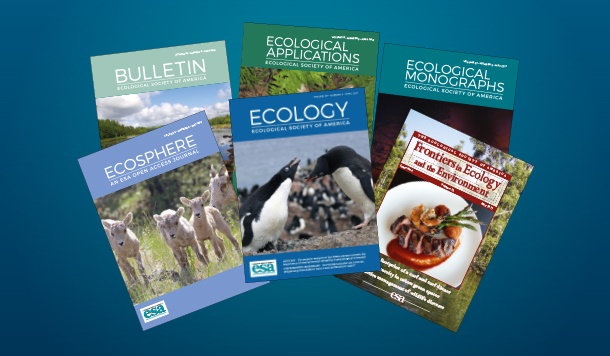Publications
Communicating Research
Scientists around the world publish their research about ecology and environmental science in ESA’s scientific, peer-reviewed journals: Ecology, Ecological Monographs, Ecological Applications, Frontiers in Ecology and the Environment, and the open-access journal Ecosphere. In addition, the ESA’s quarterly publication The Bulletin covers ecological events, news, and reports of interest to the ecological community. The Bulletin also includes commentary and opinion on ecological issues, as well as the official record of the business of the Ecological Society of America.
As the largest journal in the ESA portfolio, Ecosphere published more than 400 articles in 2017. Our flagship journal Ecology, founded in 1920, continued its solid publishing history with 375 articles. Ecological Applications and Ecological Monographs published 205 and 36 articles, respectively. This year, Frontiers in Ecology and the Environment launched the much-anticipated “Exploring Ecological Careers” series. Each open-access article highlights a different non-academic career, from jobs in NGOs and museums to a career as a science writer or policy advisor.
The ESA’s publishing partnership with John Wiley & Sons, begun in 2016, has resulted in broader distribution of our journals and dramatically higher online usage. In 2017, we also saw radically shorter publication times for all our journals – reducing the time to publication by 50% on average – and production windows continue to narrow as we refine our workflows. For our open-access journal Ecosphere, articles are generally published within 30 days of acceptance.
Journal Impact Factors and Rankings
In 2016, the Impact Factors (IF) of all ESA journals remained strong. The Impact Factor is an important metric of prestige and value of our publications to researchers, academics, and general scientific audiences worldwide.
Ecology Category
IF Journal Name (Rank out of 153 journals)
8.759 Ecological Monographs (5)
8.039 Frontiers in Ecology and the Environment (7)
4.809 Ecology (20)
4.314 Ecological Applications (24)
2.49 Ecosphere (60)
Environmental Science Category
IF Journal Name (Rank out of 229 journals)
8.039 Frontiers in Ecology and the Environment (6)
4.314 Ecological Applications (31)
In The News
Throughout the year, ESA promotes research articles through writing press releases and working with universities, organizations, and federal agencies that also work to garner press. ESA’s in the news page regularly posts news articles resulting from journal articles.
Ecological Applications
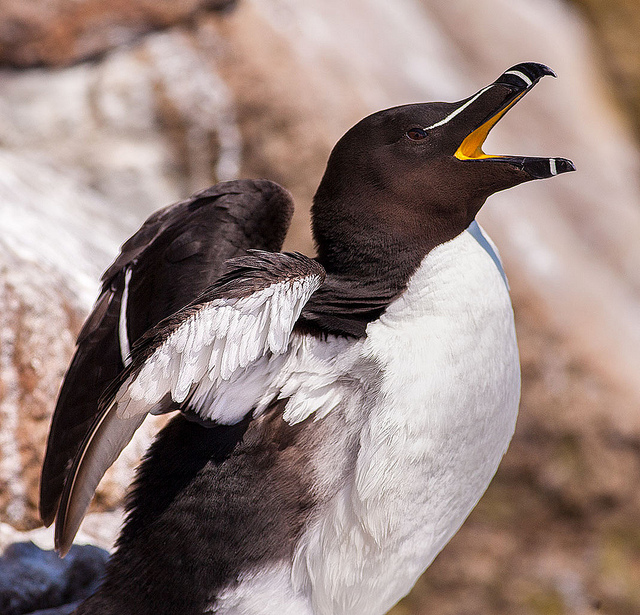
Seabirds fitted with GPS lead scientists to feeding ‘hotspots’ The Times 7/7/2017
Satellite-tracking study gives new insights into where seabirds find food Irish Examiner 7/7/2017 UK and Irish seabirds search area size of Spain for food New Scientist 7/7/2017 Image Source: John Finn https://www.flickr.com
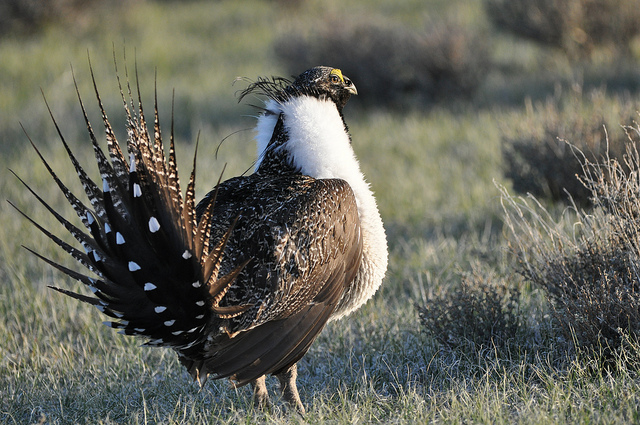
Study: Livestock grazing can benefit struggling bird species Billings Gazette 3/26/2017
Image Source: Pacific Southwest Region USFWS www.flickr.com
Ecological Monographs
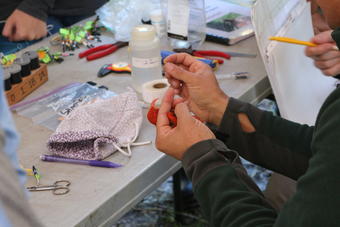
Scientists Evaluate Ways to Save Hawaiian Honeycreeper Maui Now 4/11/2017
Rare honeycreepers fighting decline West Hawaii Today 4/12/2017
Image Source: Eben Paxton, U.S. Geological Survey. Public domain.
Ecosphere

How Scientists And Indigenous Groups Can Team Up to Protect Forests and Climate Smithsonian Magazine 5/3/2017 Indigenous peoples, forest conservation and climate change: a decade of engagement The World Bank 5/4/2017 Image Source: World Bank

New study: Mountain forests store carbon better than flatland forests Arizona Daily Star 7/29/2017
Image Source: Boulder Creek CZO
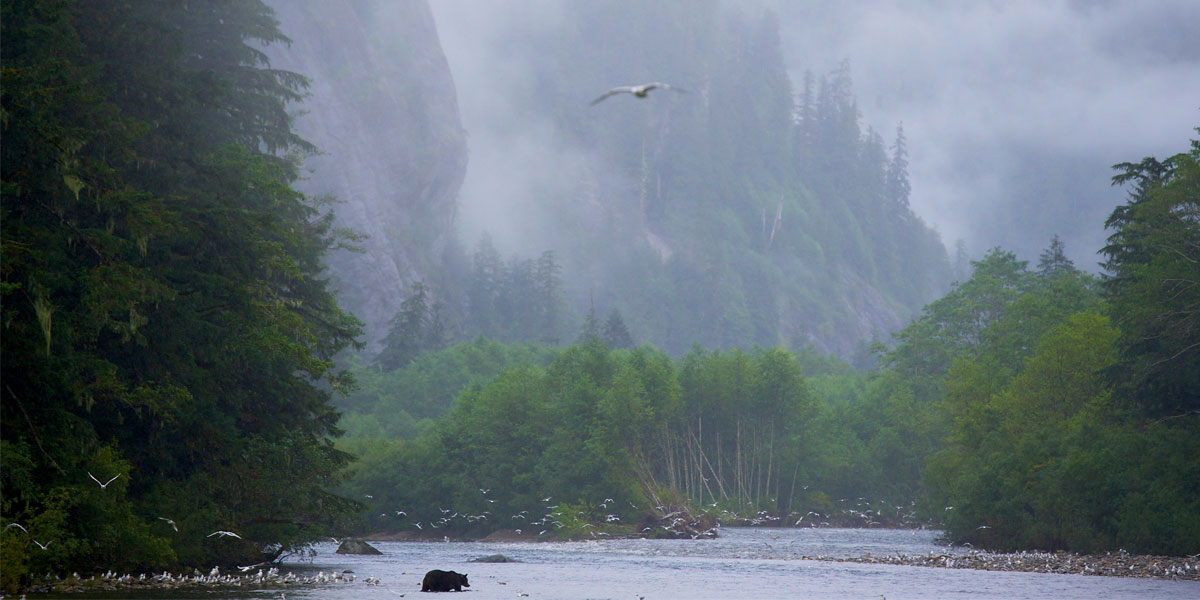
Bears, their hair and their fishy fare: Study gives new insight into grizzlies’ salmon diets The Globe and Mail 6/23/2017 New study maps out salmon hotspots across B.C. for bears CBS News 6/22/2017
Image Source: Jamen Rhodes
Ecology
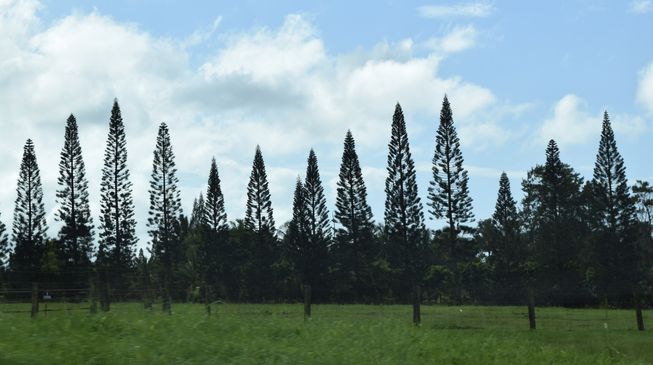
The strange Cook pine trees that always lean towards the equator New Scientist 6/2/2017
Why Do The Strange Cook Pine Trees Lean Toward The Equator? Study Reveals Science World Report 6/5/2017
Image Source: Deb Nystrom https://www.flickr.com/photos/stella12/32862451313/
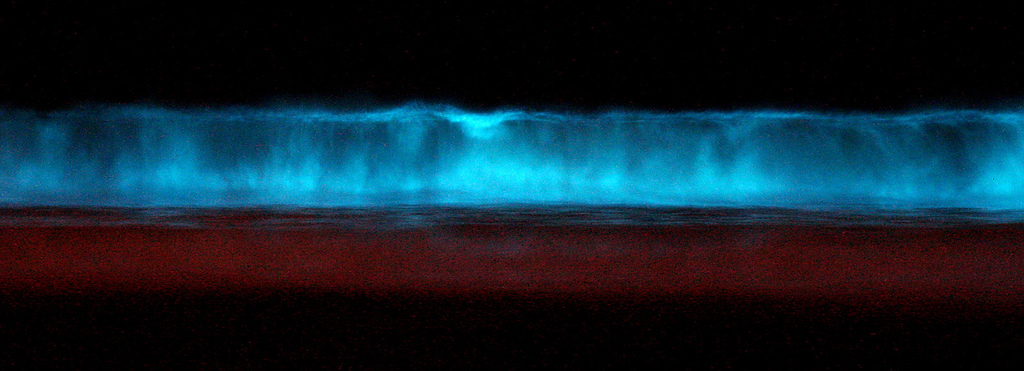
Southern California: Why do red tides happen? International Business Times 3/14/2017 Chaos theory may help predict red tides Inside Science 5/22/2017 Image Source: Mike www.flickr.com

Female dragonflies fake death to avoid males harassing them for sex Newsweek 5/28/2017 Female dragonflies fake sudden death to avoid male advances New Scientist 5/27/2017 Female dragonflies play dead to get rid of aggressive males NY Post 5/1/2017 Why female dragonflies go to extreme lengths to avoid sex National Geographic 5/1/2017 Image Source: USFWSmidwest
Frontiers
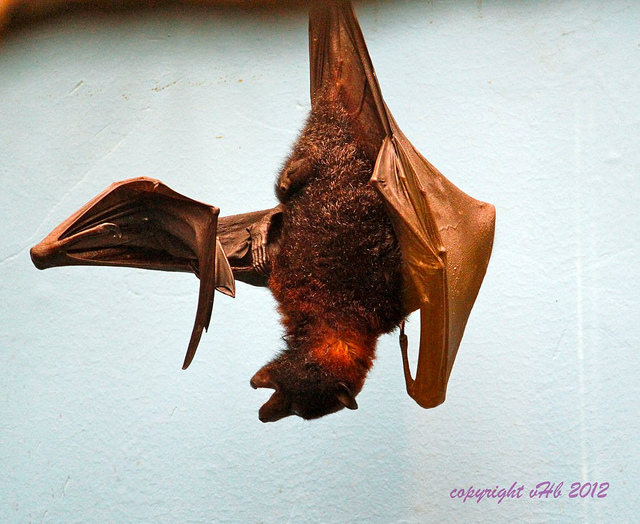
Brazil’s invasive pigs are bad enough. But now, they’re feeding rabid vampire bats Washington Post 11/4/2016
Image Source: Valerie Helms-Breedlove

Tree-climbing goats spit out and disperse valuable argan seeds New Scientist 5/25/2017
Image Source: H Garrido/EBD-CSIC
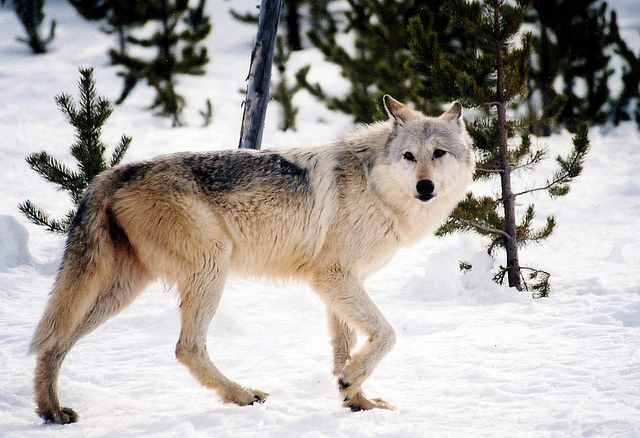
The Case for Mass Slaughter of Predators Just Got Weaker National Geographic 9/1/2016
Press Release: Study Debunks Theory That Killing Predators Reduces Livestock Losses Center for Biological Diversity 9/1/2016 Image Source: MacNeil Lyons, National Park Service, USFWSmidwest www.flickr.com

Bitumen from the oilsands could impact marine ecosystems in 15 ways, scientists say. Vice 12/22/2016 Scientists just found 15 ways Alberta’s oilsands sector can alter oceans National Observer (Canada) 12/20/2016 Image Source: Michael Collier
Social Media
In 2016-2017, Ecosphere, Ecology, Ecological Applications, Ecological Monographs, and the Bulletin joined Frontiers on Twitter, generating daily updates on their latest publications.
#Freshwater #wetland #connectivity in the eastern United States. #landscapeecologyhttps://t.co/Y6UmlZ9SiH pic.twitter.com/kh300Qwgo2
— Ecosphere (@ESAEcosphere) August 4, 2017
#Mutualism between mussels and cordgrass enhance N removal in a salt marsh. #ecosystemservices #saltmarshhttps://t.co/jEnaDNdw7H pic.twitter.com/V3uWOYjbAG
— Ecosphere (@ESAEcosphere) April 24, 2017
Early View! Prediction in #ecology: a first-principles framework#predictabilityhttps://t.co/NvdHYaXM0x pic.twitter.com/Wo6NIoNnXq
— Eco Applications (@ESAApplications) August 29, 2017
Why phylogenies do not always predict ecological differences — nice paper in @ESAMonographs https://t.co/MhTYyOfxqi
— Matthias C. Rillig (@mrillig) May 12, 2017
This should be a good & thought-provoking read!
100 years of ecology: what are our concepts and are they useful? https://t.co/lDJzjHIGyK— Emily Stanley (@EStanLimnology) May 3, 2017
The importance of history and historical records for understanding the #Anthropocene
Photo: circa 1910
doi:10.1002/bes2.1296 pic.twitter.com/D52DOMcSDL— Bulletin ESA (@ESABulletin) March 9, 2017
Looking for massive data from #rainforests? ATLANTIC-CAMTRAPS: a dataset of medium and large terrestrial mammal. https://t.co/x1PDbx11BP
— Mauro Galetti (@mauro_galetti) August 31, 2017
Modeling global #spatiotemporal distribution of C isotopes in ocean #phytoplankton. #stableisotopeshttps://t.co/jDxeSK0ZGA pic.twitter.com/xg15xElkCa
— Ecosphere (@ESAEcosphere) May 9, 2017
Rodent effects on island ecosystems are manifested throughout entire food webs. #foodwebshttps://t.co/GvVBc1FRKf pic.twitter.com/cTrDyrCwFi
— Eco Applications (@ESAApplications) March 31, 2017
Does #evolution explain ecological patterns? Rethinking ecological predictions from #phylogenetic trees. @urban_sci https://t.co/X6iEMIKw36 pic.twitter.com/w8EHGB2OXb
— Eco Monographs (@ESAMonographs) May 9, 2017
Some goats climb trees when ground foraging fails, and spit out seeds – it's an an understudied dispersal mechanism https://t.co/mFRkWHPQ1r pic.twitter.com/E7arZ94zlZ
— ESA Frontiers (@ESAFrontiers) May 4, 2017
Photo Gallery: how #fire regimes, not just fire events, influence #biota in #forestshttps://t.co/VXRUK2ocNG pic.twitter.com/RzWD7SsLSU
— Bulletin ESA (@ESABulletin) July 11, 2017
My pub in latest issue of @ESAEcology just came out!#ammoniaoxidizers #microbes #soil #tropics #climatehttps://t.co/JbP2ibbkKw
— sue pierre (@sue_pierre) June 30, 2017
#New @ESAEcology
Density dependence governs when population responses to multiple stressors are magnified/mitigatedhttps://t.co/2uUxITiUJs pic.twitter.com/JHjmmwIScm— Ecology (@ESAEcology) July 24, 2017
Study: Map shows areas with great #conservation value & why we need to protect wildlands https://t.co/DQW0TwL0MN @ESA_org #sciencematters pic.twitter.com/BgBY2pkIN6
— Wilderness Society (@Wilderness) March 10, 2017
Grammer et al. Upwelling signals in fish earstones tell tale of trace element uptake in marine waters https://t.co/e8qt4hlysh@ESAMonographs pic.twitter.com/22TUa1mv6A
— Bronwyn Gillanders (@BronGillanders) May 5, 2017
New series begins August: Exploring Ecological Careers (non-academic). Need more authors and job ideas-contact suesilver@esa.org for details pic.twitter.com/ff0KivMlBa
— ESA Frontiers (@ESAFrontiers) May 9, 2017
Selection pressures from roads drive #evolutionary changes – but are a neglected topic in #roadecology https://t.co/7ifLyCkkAm pic.twitter.com/sI55wDPyzq
— ESA Frontiers (@ESAFrontiers) March 7, 2017
A foundation of ecology rediscovered in @GlacierBayNPS @ESAEcology https://t.co/oD5AbOgHkL rediscovering WS Cooper's plots @uasoutheast pic.twitter.com/15GwIbfcSm
— Ecological Society (@ESA_org) June 1, 2017
VERY interesting->The double edge to parasite escape: invasive host is less infected but more infectable @ESAEcology https://t.co/VALaOdxgWd
— Sarah Knutie (@SarahKnutie) July 25, 2017
It’s essential to understand #ecological roles fulfilled by #urban green spaceshttps://t.co/Lgc5RjXDXn pic.twitter.com/refjO1YzHk
— Eco Applications (@ESAApplications) August 23, 2017
Concepts & Synthesis: What global change presses and pulses are more likely to initiate ecological regime shifts? https://t.co/GG7ZOl4c3c pic.twitter.com/HsabVmeFGY
— Eco Monographs (@ESAMonographs) March 24, 2017
Behavioral flexibility might be one of the most important ways that organisms can adapt to climate change https://t.co/bsknAkamq3 pic.twitter.com/Ho0x14cNbJ
— ESA Frontiers (@ESAFrontiers) July 10, 2017
Frontiers Focus
Authors of paper published in Frontiers in Ecology and the Environment are invited to write lay summaries and to create videos, animations, photo albums and more to accompany their paper. Posted to the ESA Facebook page and ESA’s blog, Ecotone, these accessible, public-friendly pieces are intended to spread the word about the cool science in ESA Frontiers to as broad an audience as possible. Frontiers authors published 18 lay summaries this year in conjunction with the Public Affairs Office.
BIODIVERSITY HOTSPOTS ARE ALSO HOTSPOTS OF INVASIONInvasion hotspots for reptiles and amphibians appear to be more…
Posted by Ecological Society of America on Friday, October 28, 2016
We are constantly being bombarded with negative visions of the future, which may inhibit our ability to move towards a…
Posted by Ecological Society of America on Friday, October 14, 2016
“Pirate” evokes images of legendary figures from the days of the great tall-masted sailing galleons, like Captain Henry…
Posted by Ecological Society of America on Tuesday, September 27, 2016
Publications Staff
Director: Steven Sayre
Peer Review Specialist: Jane Bain
Peer Review Specialist: Heather Carlo
Peer Review Manager: Ellen Cotter
Peer Review Manager: Anne Marie Whelan
Peer Review Assistant: Sarah Schneider
Frontiers in Ecology and the Environment Staff
Editor in Chief: Sue Silver
Senior Editor: Peter Mooreside
Assistant Editor: Heidi Swanson

